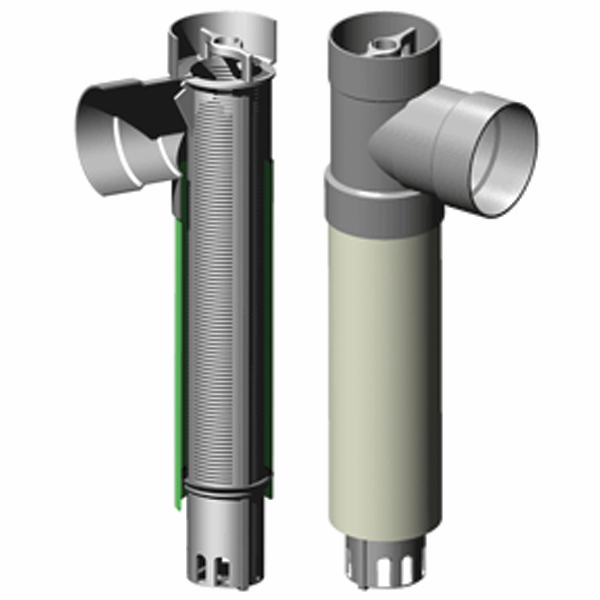Lifetime service self-cleaning sieve septic filter never needs replaced
Every greywater or septic tank system MUST have a filter to prevent particulates from entering the leach field. Particulate combine over the years to form a black sludge 'bio-mat' layer in the bottom of your leach field. Bio-mat clogs the soil, prevents percolation and eventually causes total failure with sewage backing up into the house. Best practice is a two-compartment septic tank with septic filer in the outlet side of second compartment. Should you have an existing single compartment septic tank, you really should add a second, smaller settling tank in-line afterwards. Locally sourced tanks will save a great deal of money given freight cost on such large items. Choose a tank that is rated for 'dry burial', meaning it can be buried without water inside and not risk collapsing from weight of soil atop and around. Tanks as small as about 100 gallons and 4 foot tall tall are adequate for a greywater or septic system, but generally required to install at least 300 to 500 gallon second compartment tank in most of the country. The larger the tank, the longer the retention time and better treatment of waste water. Filter can be installed in a single compartment septic tank, but self-cleaning function may be compromised.
$107 each and only available with Infiltrator septic tank
includes free 5" diameter hole saw kit for cutting inlet and outlet
We no longer ship septic filter kits outside of Colorado. For Infiltrator system clients, this dependable kit comes complete with filter, housing tee that fits Sch40 or SDR35 four inch pipe, and a handle extension kit. You will never have to replace this lifetime service septic filter. Best to hose it off once a year to be sure, but generally this septic tank filter will automatically shed debris for self-cleaning operation.
Polylok PL-68 Effluent Filter with Housing is a decent substitute for ~$60.
We no longer ship filters, but they are readily available at Amazon.com.
Our time-tested NSF/ANSI certified standard #46 septic tank filter assembly has a universal hub for use with either SDR35 thin-wall or Sch40 thick wall 4 inch diameter pipe. This lifetime service filter is self-cleaning in normal use, with a natural sloughing action to prevent bio-mat buildup. Features 80 lineal feet of filtration area for up to 800 gallons per day treatment volume. Built-in gas deflector on the bottom provides secondary 1/2 inch filtration to prevent larger solids from entering inside. A series of 1/16 inch horizontal filtration slots, rather than a mesh screen, provides much less surface area for solids to attach themselves. Patented flow pattern reduces trapping of solids inside the filter by allowing sediment to slough-off and fall back into the tank for further digestion. Filter features a locking tab to prevent ‘floating’. Solids are not allowed to pass-by even when tank surges occasionally. This care-free septic filter design never needs replacing.
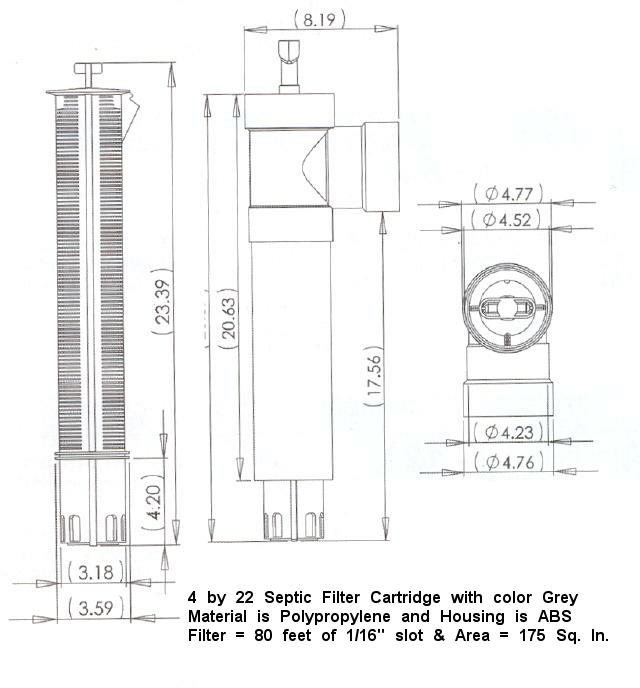
Two rubber gaskets for inlet and outlet pipe holes are included with Infiltrator septic tanks along with two PL-68 drop-tees. Please note these PL-68 drop-tees may not be approved for use as inlet tees in your county. Check with local officials before installing. Inspectors may allow cutting the PL-68 down to regulation depth. If not, install a standard 'sanitary tee' fitting with drop pipe, as pictured, usually with two 22.5 bends prior to sanitary tee to bring top of fitting closer to water level. Rules vary from in every county and from one inspector to the next, but bottom of inlet pipe is normally ~12 inches below tank water level. Liquid surface is measured at outlet pipe, which is lower than inlet. Inlet hole is generally two inches higher than outlet to prevent sewage back-up.
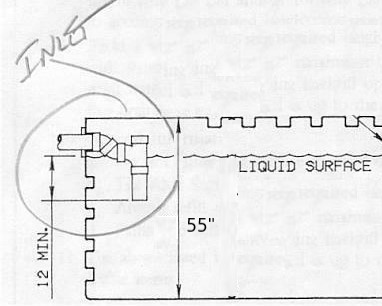
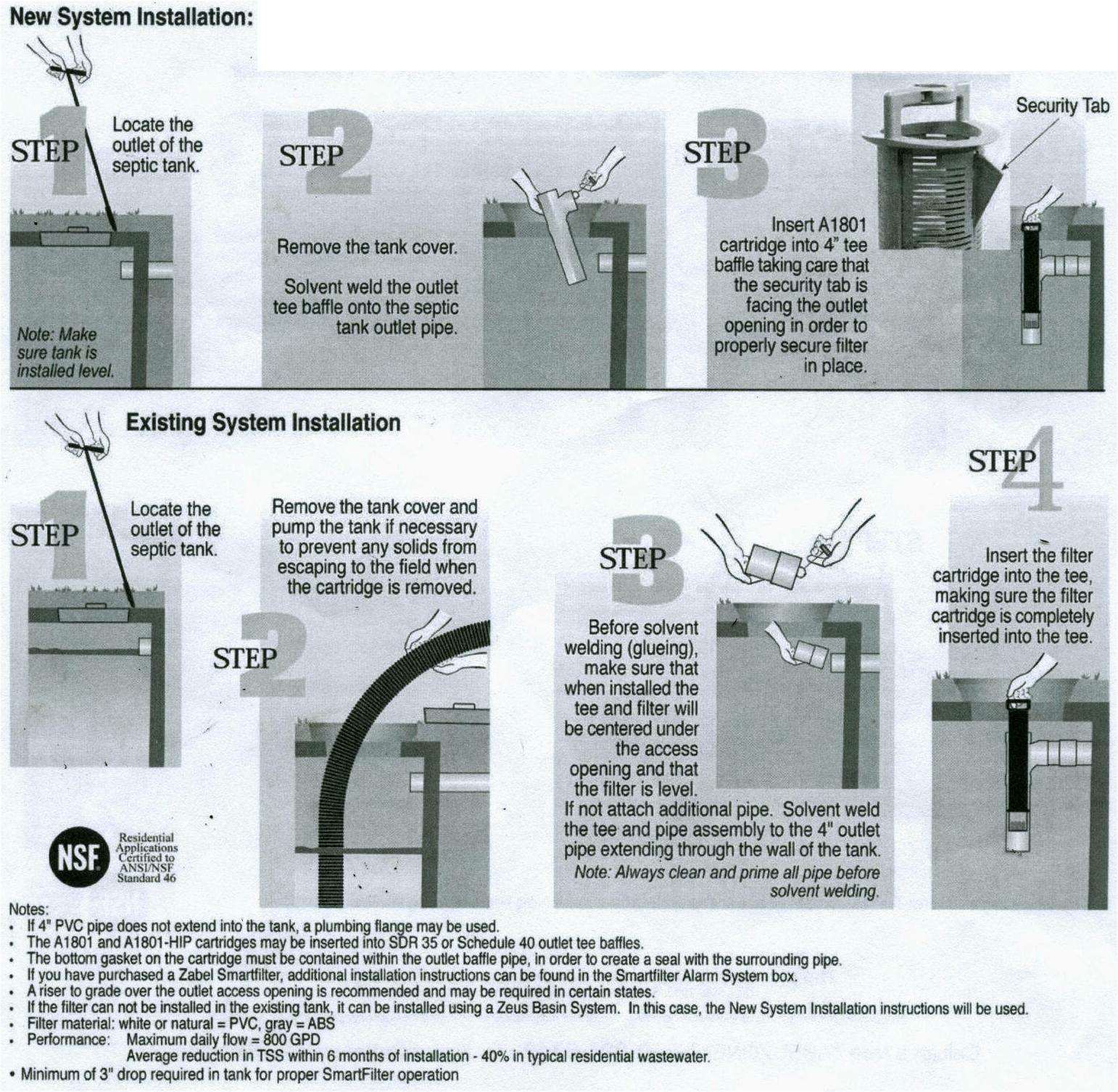
Filter housing is black ABS plastic so use 'multi-plastic' cement with white/green PVC pipe.
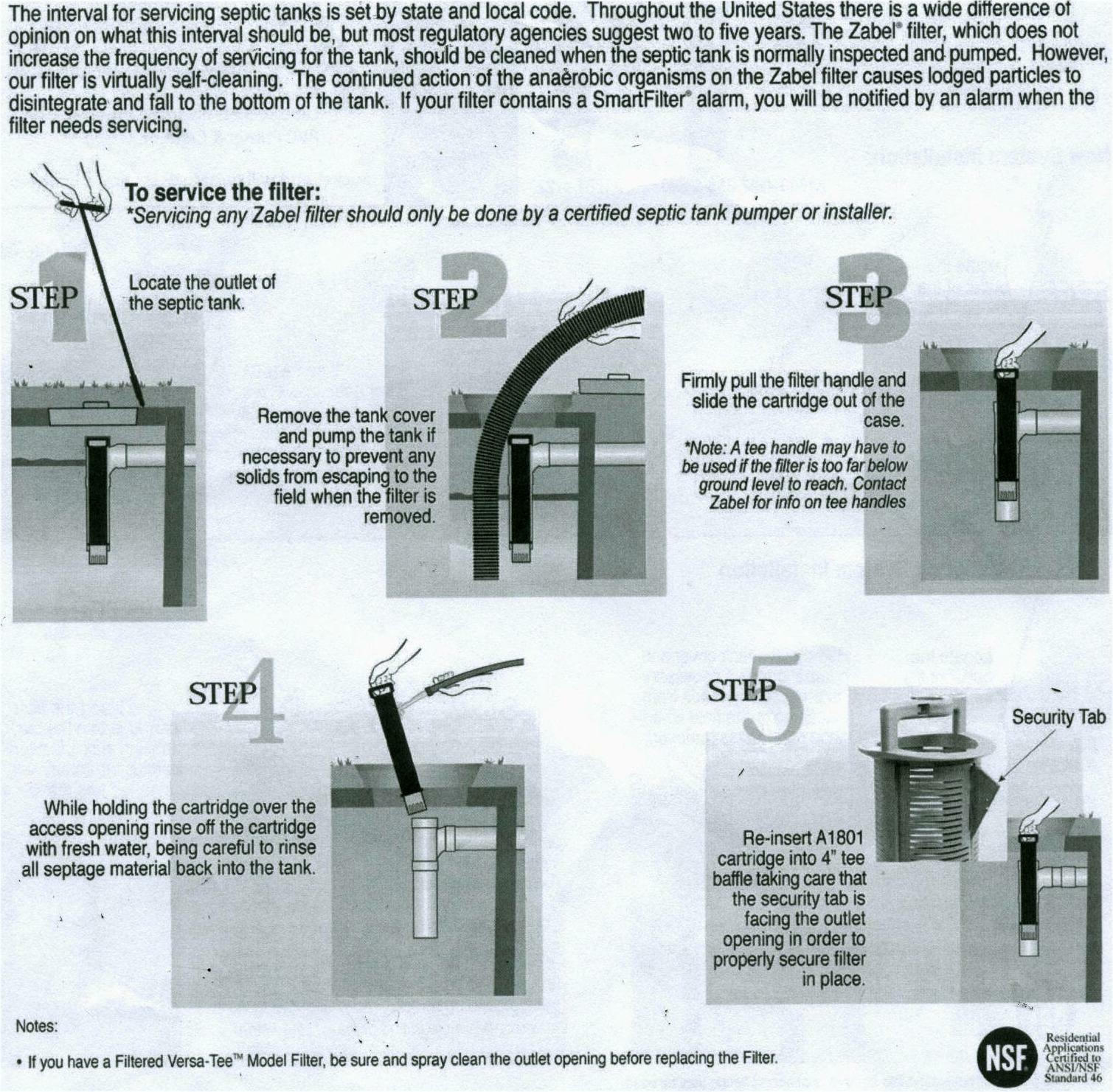
recommendations for pumping septic tanks
Check both compartments yearly and pump long before enough solids accumulate in first compartment to spill over into second compartment. Usually less than sixteen inches - consult manufacturer of your tank. Wrap a piece of white towel around the end of a long pole to check solids level in bottom of your septic tank. A healthy, properly sized septic tank might never need pumped, but not pumping when needed will result in grease and solids getting out to the leach field. Particulates, grease and solids create 'biomat' in the leach field percolation area, eventually causing it to fail and need replacement. Every three to five years is the normal cycle for pumping a septic tank (less often in warmer areas and/or lower usages). Should you live in an extremely cold climate, never have your tank pumped in the fall or winter - only pump in the spring. Septic tank water only avoids freezing through biological/bacterial activity (fecal matter decomposing). Refill your septic tank with water immediately after having it pumped! Without water on the inside, an empty septic tank is under extreme stress resisting the weight of backfill around it. This is especially true when soil is wet and when tanks are not properly bedded in plenty of gravel (selective, draining backfill). Stress is critical when sewage pumpers park too close to the tank, so always keep their truck at least 20 feet away. With enough stress, an empty concrete and fiberglass tank will crack, start leaking and eventually have to be replaced. Install an effluent septic filter and spray it off during yearly inspection of tank Sieve filters keep larger particles from getting out of the tank and compromising the leach field by clogging soil pores and causing failure (bio-mat). Septic filters are cheap insurance, installing easily in the second compartment of your septic tank.
never use ANY septic additives or enzyme digesters
Properly sized two compartment septic tanks operate just fine without potentially dangerous additives. Breaking down fats and solids in the septic tank with digestive enzymes simply allows these now much smaller particles to pass through the septic filter where they reunite in the leach field, forming a dense bio-mat. The FDA has never approved any additives; none are considered safe or effective. You don't want these additives finding their way into the groundwater where they can be used for irrigation and drinking. Leach field distance from the wellhead (100 to 200 feet) is no guarantee of safety, it's just an arbitrary number locally assigned to allow residential construction on smaller half acre lots. Lateral water (sewage effluent) movement underground is extremely unpredictable at certain times of the year and will easily contaminate your well. Any chemical (or enzyme) which digests sewage should frighten a reasonable person to allow in their drinking or irrigation water.
Last updated on February 27th, 2024

